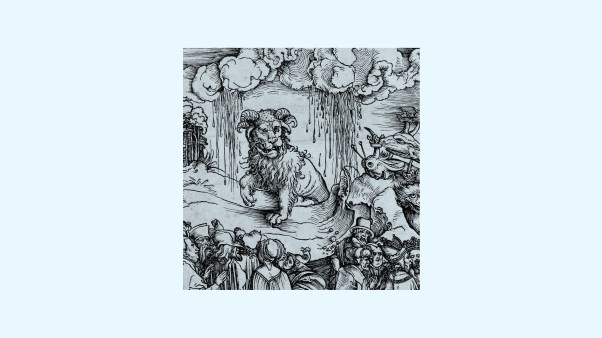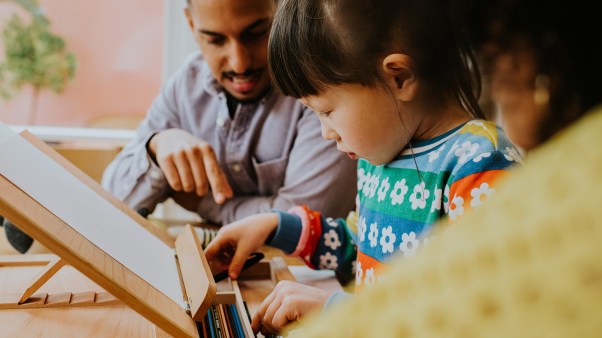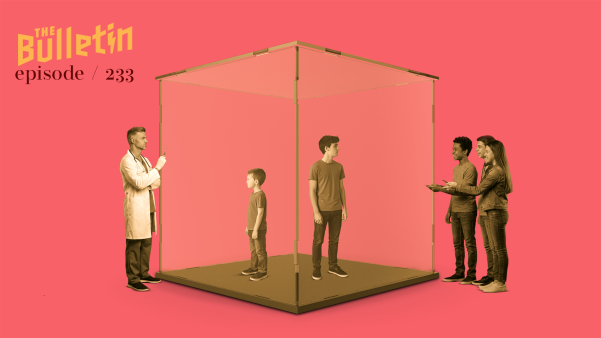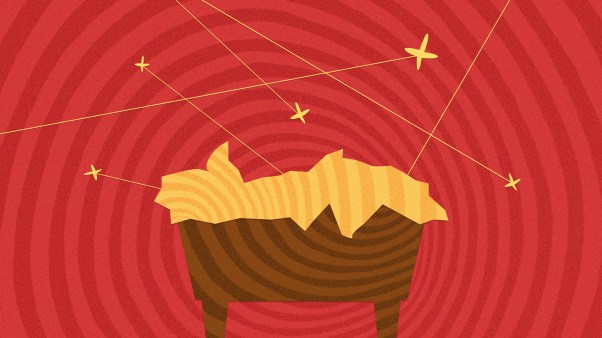When a jeweler displays a fine diamond, he often puts it on black velvet. There, it catches fire from the lights of the room, its beauty is multiplied, and its value becomes more apparent.
The Lord’s Supper is like that diamond. Sometimes it needs to be pried from traditional settings and thrown against the black velvet of the blackest night in history: the night it was instituted-the night before Christ was crucified.
Although the dinner commemorates the Passover-the release of the Israelites from Egyptian bondage-it is a teaching service and need not be limited to the Passover/Easter season. The early church had its “love feasts” regularly. Acts 2:42 (NASB) says the early Christians were “continually devoting themselves to the apostles’ teaching and to fellowship, to the breaking of bread and to prayers. “
The Young Couples Sunday school class of Evergreen Bible Church, Vancouver, Washington, involved their congregation in a Passover supper during an evening service. As the dinner progressed, the pastor explained the supper’s symbolism, and why Christ could declare he was the Passover Lamb.
The group tried to duplicate as closely as possible the Passover observance of the first century, and thus excluded several rituals that Jewish tradition has added. The pastor also shared relevant Scripture and the historical significance of this rite as background .
They chose to make their supper a potluck, making sure the menu included roast lamb, unleavened bread, a bowl of salt water, bitter herbs such as horseradish, chicory, endive, lettuce, or horehound, a paste made of apples, dates, nuts, and spices called charoseth, and grape juice. They also provided a large bowl of water and a towel for each table. The order of the service follows.
First cup, with blessing This was called “Cup of the Kiddush,” meaning “sanctification” or “separation,” and it separated this meal from common meals The host of the table would pray over the cup, then all would drink. Four cups were eventually taken during the meal, one for each of the four promises of Exodus 6:6-7:
I will bring you out from under the burdens of the Egyptians.
I will deliver you from their bondage.
I will redeem you with an outstretched arm
and with great judgments.
I will take you for my people, and I will be your God.
First handwashing. The host took the bowl of water and the towel around his table so all could wash and dry their hands. At the Last Supper, Christ also washed his disciples’ feet, teaching them humility (John 13:4-17). As he returned to his place and reclined again at the table, he became “troubled in spirit” and told of his coming betrayal (John 13:2136).
Bitter herbs. At the church’s supper, the host served parsley dipped in salt water. The bitter herbs reminded the Jews of the bitterness of slavery in Egypt; it also stood for the hyssop used to smear the blood of lambs on doorposts the night of the first Passover. The salt water was to remind them of tears they had shed in Egypt, and of their miraculous passage through the Red Sea.
Main course displayed. The main dishes were brought out, although they were not to be eaten vet. The lamb reminded the Israelites of how their homes had been protected by the lambs’ blood when the angel of death passed through Egypt. The unleavened bread symbolized the absence of sin in their lives, and how they had to leave behind them, when fleeing Egypt, all reminders of that culture, including the leaven for their bread The reddish-brown paste called charoseth stood for the clay used by the Israelites to make bricks in Egypt.
Second eating of bitter herbs. The host took the lead in eating this second reminder of the bitterness of bondage, then offered a benediction.
Second cup. This cup was called the “Cup of Haggadah” or “Cup of Explaining or Proclaiming.” The host again led his table in drinking this cup.
Story of deliverance. At this point in the traditional feast, the youngest son would be instructed to formally ask a series of questions starting with, “Why is this night different from all other nights?” The head of the household then would tell the whole history of Israel down to the deliverance of the Passover, explaining how this showed God’s power and mercy.
First purl of the Hallel. “The Hallel” was the name given to psalms of praise starting with “Hallelujah!” or “Praise God!” Designated here were Psalms 113 and 114. Although the Jews sang their psalms, they were read for this service.
Second handwashing. The host washed his hands and then prepared a “sop,” a piece of unleavened bread filled with lamb and dipped in the charoseth. He gave the sop first to the honored guest on his left, then to others at his table. Christ had offered this sop to Judas (in the place of the honored guest), who at this point in the Last Supper left to betray him (John 13 2630).
Eating of the meal. By tradition, all the lamb was to be eaten. Anything left over was to be destroyed, and not to be used for a common meal.
Third cup. Called the “Cup of Thanksgiving,” this cup was served with a piece of unleavened bread. The pastor read from Matthew 26:26-29, telling how the Lord’s Supper was instituted, and how Christ gave this feast new meaning. No longer did the Jews need to either look back to the Exodus nor forward to the Messiah’s coming. Rather, this feast would remind them that the Messiah had come and given himself as the ultimate sacrifice. This third cup Christ did not drink, saying he would not drink it again until he drank it new with them in the kingdom (Matthew 26:29).
Grace after meal, and second Hallel. As the Jewish people have done, the pastor offered a prayer of thanksgiving and read from the second part of the Hallel (Psalms 115-118).
Fourth cup. After this cup, the Israelites traditionally sang “The Great Hallel” (Psalm 136). Possibly this is what Christ and his disciples sang when Matthew notes, “After singing a hymn, they went out to the Mount of Olives” (Matthew 26:30). The church group also concluded the meal on a prayerful note of thanksgiving, singing “Amazing Grace.”
The pastor explained that Christ’s disciples followed him out to the dark hours of Gethsemane, not fully aware of what he had shown and taught them by the bread and the cup. Not until the cross did the Passover have a fuller, richer, and deeper significance .
After that black night, the Passover, like a diamond on black velvet, could glisten in the glory of the resurrection.
-Jeanne Doering
assistant editor
Moody Monthly
Copyright © 1981 by the author or Christianity Today/Leadership Journal. Click here for reprint information on Leadership Journal.









